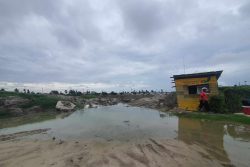Two reports published in this newspaper over the past seven days demonstrate the stagnation in thought that hinders progress. The stories, published on January 16 and 19 dealt with agriculture, sugar and rice respectively, to be exact.
The first report, gleaned from a press release followed by a press conference held by the Guyana Agricultural and General Workers Union (GAWU), spoke of the plight of sugar workers left jobless by the closure of estates. The report mentioned that GAWU had some 16 affected people at its press conference – former workers and their wives – who testified to being in the pits since they or their spouses had lost their jobs. Some proposed that they could be given land to farm, taught a trade, or gain employment in factories they want the government to open in the areas where the estates were closed. But most of them, the report said, suggested that the estates should be reopened so that their lives could return to the way they were.
The latter suggestion is, of course, a pipe dream. One of the reasons why sugar has been utterly failing as a major crop in this country is because it is a commodity that is massively overproduced, and its price, obviously, succumbs to the laws of demand and supply. The sugar used in the world comes from two sources and although the majority of it is from cane, which is the crop planted in Guyana, beet, grown primarily in the European Union (EU) and North America enjoys better status; beet farmers are protected by their governments.
As far as cane sugar goes, Brazil and India are projected to produce 627 million metric tonnes and 30.3 million metric tonnes respectively for 2019/2020. And with the EU protecting its farmers on the one hand and dumping its excess beet sugar on the world market on the other, Guyana and other countries that no longer benefit from EU preferential prices are doomed. They could not possibly sell enough sugar at prices that make sense. None of this is new or secret information. Reports, commodity prices, forecasts, all and any information on sugar is readily available from multiple reliable sources.
Did the government stumble when it closed the sugar estates before developing a viable option for the workers? Majorly. But slashing the red into which sugar had dipped had been necessary for a long time. It had become a double-edged sword.
As an aside, it had been found since 2000 that the monocultural growing of cane sugar, the pesticides and fertilizers used as well as its pre-processing and processing, which includes burning the canes in the field, greatly damage the environment.
In the second report, the Guyana Rice Development Board (GRDB) celebrated the achievement of the country’s second highest production on record: 1,049,874 metric tonnes of paddy in 2019. This was accomplished, the GRDB said, despite several challenges, including extremely unfavourable weather conditions and some pest infestation. But played off against favourable markets, seed treatments, improved agronomy and higher-yielding seed paddy being planted, rice surmounted the challenges.
GRDB General Manager Nizam Hassan also played up the Venezuelan market, which he said now accounts for 34% of exported rice. One hopes, given the economic turmoil in Venezuela, that exports really translate to sales and that a wary eye is being kept on all this.
While the average price for white packaged rice was given as US$475 per tonne and bulk white rice as US$440 per tonne, these were not measured against the cost of production and therefore cannot tell the whole story. There should be no need to gloss over the details if rice is really in a good place. Further, if it were, then farmers would not need to be constantly clamouring for a higher price for their paddy as they now do, they would be receiving it.
If, as the farmers claim, the price of paddy keeps them in the red, what would be the point of a bumper crop? Farmers would be better off scaling back and diversifying to other crops or avenues that make financial sense, because unlike their counterparts in the EU and North America, there is no buffer of protection for them.
The compulsion to cling to sugar and rice as our major crops, even in the face of dwindling fortunes points to inertia and a lack of vision that are death knells to progress. In the light of shifting global food preferences, where would the country have gone if it had moved into another industry in a big way 15 years ago, instead of constructing the now-beleaguered Skeldon sugar factory? We will never know. What is clear, however, is that true progress requires plain speaking all around.
As the political parties campaign with an eye to winning or gaining ground on March 2, there will be attempts by those whose intention it is to lead sheep, to tell the people what they think they want to hear, rather than what is. One hopes that some at least will be discerning enough to know the difference.






